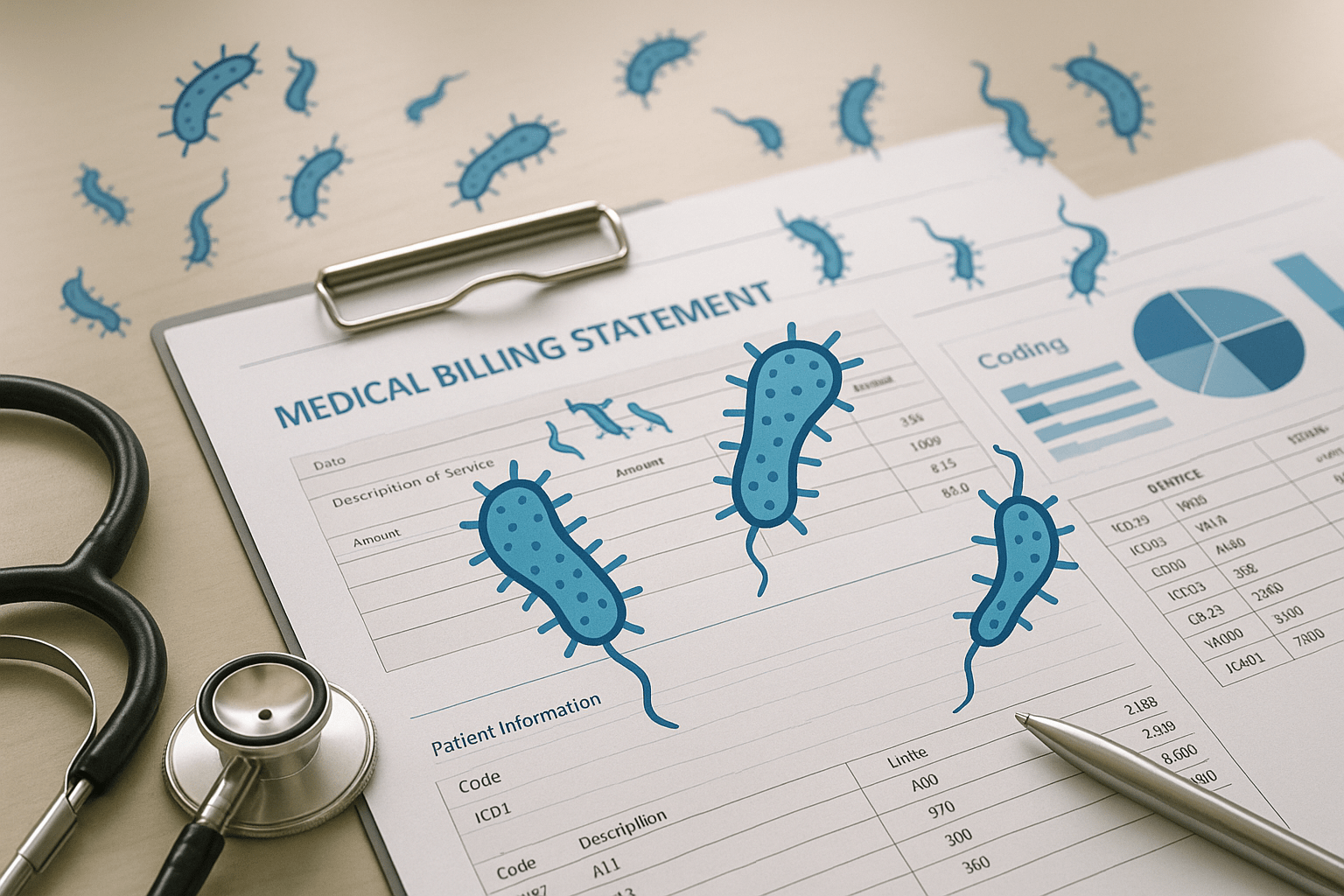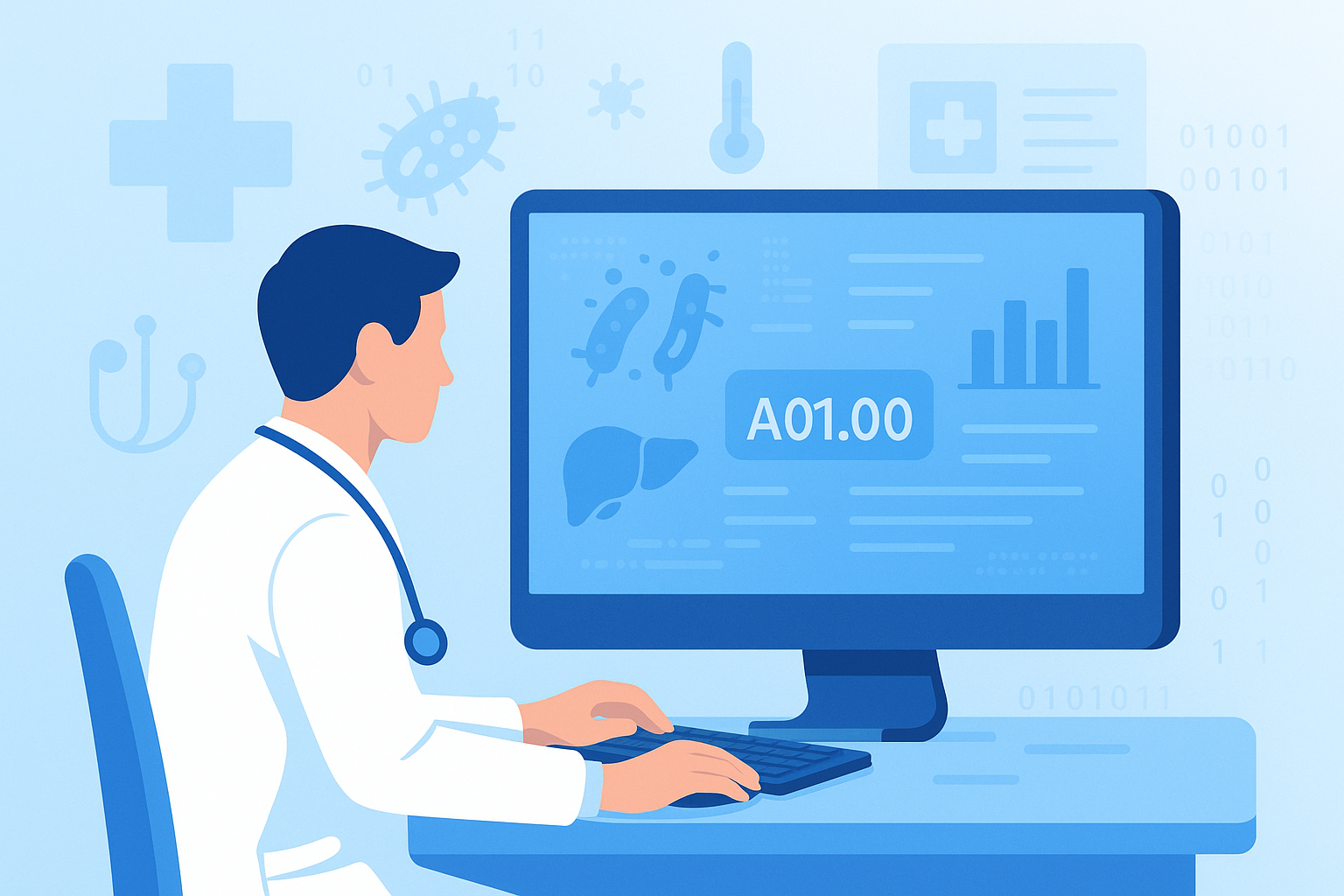Marcus woke up at 3 AM with violent stomach cramps and spent the next few hours running to the bathroom. By morning, exhausted and dehydrated, he wondered if this was just something he ate or something more serious. At the urgent care clinic, the doctor nodded knowingly and reached for a diagnosis code that captures one of the most common yet often misunderstood conditions: A009.
We’ve All Been There
Let’s be honest. There’s nothing quite like that sinking feeling when your stomach starts doing somersaults at the worst possible time. Maybe you’re traveling abroad, or perhaps you ate something questionable at that new restaurant downtown. Whatever the cause, when severe diarrhea strikes, it doesn’t just ruin your day. It can be downright scary.
For most of us, it passes within a day or two. But sometimes, the symptoms are severe enough that you end up in a doctor’s office or emergency room. That’s when medical coding comes into play, and that’s where A009 enters the picture.
This particular code represents “Cholera, unspecified,” and before you panic at the word cholera, let me explain what this actually means in the real world of healthcare. It’s not as dramatic as it sounds, and understanding it can help you make sense of your medical bills and diagnosis paperwork.
What Exactly Is A009?
Think of ICD-10 codes like a massive filing system for every possible health condition you can imagine. A009 sits in a specific drawer labeled “intestinal infectious diseases.” More specifically, it’s the code doctors use when they suspect cholera but don’t have laboratory confirmation yet, or when the specific type of cholera bacteria hasn’t been identified.
Now, here’s where it gets interesting. Cholera comes in different varieties, kind of like how there are different strains of flu. The ICD-10 system gives us specific codes for each type. A00.0 is for cholera caused by Vibrio cholerae 01, biovar cholerae. A00.1 is for Vibrio cholerae 01, biovar eltor. But A009? That’s the catch-all code. It’s what we use when we know (or strongly suspect) it’s cholera, but we can’t pin down the exact bacterial culprit yet.
Think of it like identifying a car from a distance. You might see it’s definitely a sedan, but you can’t quite make out whether it’s a Honda or a Toyota until you get closer. A009 is that “definitely a sedan” moment in medical coding.
What Does This Look Like in Real Life?
Picture this: A patient walks into the emergency room after returning from an international trip. They’ve been experiencing profuse watery diarrhea, the kind that’s often described as “rice water” in appearance. They’re showing signs of dehydration with sunken eyes, decreased skin elasticity, and extreme thirst. The doctor takes one look at the travel history and symptoms and thinks, “This could be cholera.”
But here’s the thing. You can’t just look at someone and definitely say they have cholera. It requires laboratory testing, specifically a stool culture, to confirm the presence of Vibrio cholerae bacteria. And lab results don’t come back instantly. They can take anywhere from 24 hours to several days.
So what does the doctor do in the meantime? They need to document the visit, start treatment, and yes, assign a diagnosis code for billing and medical records. Enter A009.
It’s also used in situations where lab testing might not be available or practical. Maybe the patient is in a remote clinic with limited resources. Or perhaps they’re already recovering by the time they seek medical care, making testing less urgent. In these cases, A009 bridges the gap between clinical suspicion and laboratory certainty.
Why This Code Actually Matters (More Than You Think)
You might be wondering why we need such specific codes. Can’t doctors just write “bad stomach bug” and call it a day? Well, not quite. These codes serve multiple critical purposes that ripple through the entire healthcare system.
First, there’s public health surveillance. Cholera isn’t just another stomach bug. It’s a reportable disease that health departments track carefully. When a doctor uses code A009, it sends up a signal in the public health system. Epidemiologists can track potential outbreaks, identify contaminated water sources, and take action to protect communities. It’s like an early warning system for disease outbreaks.
Second, the code triggers specific treatment protocols. Cholera requires aggressive fluid replacement therapy. When healthcare providers see A009 in a patient’s chart, they immediately know what level of care and monitoring is needed. It’s not just about rehydration. It’s about preventing shock and potential kidney failure.
Third, and this is crucial for anyone who’s ever received a medical bill, the code affects insurance reimbursement. Insurance companies need to understand the severity and nature of a condition to determine appropriate payment. A009 signals that this isn’t your average case of food poisoning. It’s a potentially serious infection that requires specific interventions.
The Medical Billing Side of Things
For medical billers and coders, A009 presents some interesting challenges. The key is documentation. You can’t just slap this code on any case of diarrhea. The medical record needs to support the diagnosis.
What does good documentation look like? The doctor’s notes should include details about the patient’s symptoms, particularly the characteristic “rice water” appearance of the diarrhea. Travel history is often crucial, especially visits to areas where cholera is endemic. The clinical presentation should be consistent with cholera, including signs of dehydration and electrolyte imbalance.
One common mistake coders make is confusing A009 with other diarrheal disease codes. For instance, A09 is “Infectious gastroenteritis and colitis, unspecified.” That’s a much broader code used for general stomach bugs. A009 is specific to cholera suspicion. Using the wrong code can lead to claim denials or, worse, compliance issues.
Another important point: A009 should be updated if more specific information becomes available. Let’s say a patient is initially coded with A009, but lab results come back three days later confirming Vibrio cholerae 01, biovar eltor. The coder should update the diagnosis to A00.1 for accuracy. It’s like updating your GPS when you get better information about your destination.
Billers also need to ensure that the code matches the treatment provided. If someone is receiving the intensive fluid replacement therapy typical for cholera, A009 makes sense. But if the treatment is just basic supportive care you’d give for any mild diarrhea, the code might be questioned during an audit.
What This Means If You’re the Patient
So you’ve been to the doctor, and you’re looking at your discharge papers or explanation of benefits from your insurance company. There it is: A009. What should you do?
First, don’t panic. Remember, “unspecified” doesn’t mean your doctor doesn’t know what’s wrong with you. It simply means the exact bacterial strain hasn’t been pinpointed, or testing wasn’t done for various practical reasons. Your doctor still understands your condition and is treating it appropriately.
That said, it’s perfectly reasonable to ask questions. Here are some good ones:
“Did you order lab tests to confirm this diagnosis?” This helps you understand whether follow up results might be coming.
“What made you suspect cholera specifically?” Understanding the reasoning can give you peace of mind and help you watch for concerning symptoms.
“Do I need to take any special precautions to avoid spreading this to family members?” Cholera is transmitted through contaminated food and water, so hygiene practices are important.
“Will this code affect my insurance coverage?” Most insurance plans cover infectious diseases like cholera, but it never hurts to clarify.
From a billing perspective, the “unspecified” designation doesn’t typically affect your coverage negatively. If anything, it might work in your favor because cholera is recognized as a serious condition requiring aggressive treatment. Just make sure you understand your explanation of benefits and don’t hesitate to call your insurance company if something looks off.
The Public Health Connection
Here’s where A009 becomes part of something bigger than just one patient’s medical record. Every time this code is used, it feeds into a massive public health surveillance system that helps protect entire communities.
Cholera is closely tied to water quality and sanitation. When health departments see clusters of A009 codes popping up in a specific area, they can investigate potential contamination sources. Maybe there’s a problem with the municipal water supply. Perhaps a local restaurant has hygiene issues. Or it could signal that recent flooding has compromised sewage systems.
This is especially important for international travelers. If multiple people return from the same region with suspected cholera, travel advisories can be issued. Health officials can work with international partners to address outbreaks at their source.
The code also helps researchers track the global burden of cholera and allocate resources accordingly. Organizations like the World Health Organization use this data to decide where to send vaccines, water purification systems, and medical supplies.
In a way, every A009 code is like a data point on a massive map. Individually, it represents one person’s illness. Collectively, these codes paint a picture of disease patterns that help us prevent future outbreaks and save lives.
Wrapping It All Up
Medical coding might seem like boring administrative work, but codes like A009 prove otherwise. They’re the language healthcare uses to communicate across systems, track diseases, ensure proper treatment, and protect public health.
The next time you see an ICD-10 code on your medical paperwork, remember that it’s not just a random string of characters. It’s a precise description of your condition that connects you to a vast healthcare ecosystem. It ensures you get the right treatment, helps prevent disease spread, and contributes to our understanding of global health patterns.
For Marcus, that 3 AM wake-up call turned out to be a treatable infection. Thanks to prompt medical care and proper coding, he recovered fully within a few days. More importantly, his case contributed to surveillance data that helps protect others from similar infections.
Understanding your medical codes isn’t just about making sense of billing statements. It’s about being an informed patient who participates actively in their own healthcare. And that’s something we could all benefit from.
Whether you’re a patient trying to understand your diagnosis, a medical coder ensuring accurate documentation, or a healthcare provider navigating the complexities of diagnosis and treatment, A009 serves an important role. It’s the bridge between clinical suspicion and confirmed diagnosis, the trigger for appropriate treatment, and a vital data point in our ongoing fight against infectious diseases.
So the next time you or someone you know faces that miserable experience of severe diarrhea after travel or suspect food, you’ll understand a bit more about what’s happening behind the scenes in the medical coding world. And maybe, just maybe, that knowledge will make the whole experience a little less mysterious and a lot more manageable.




